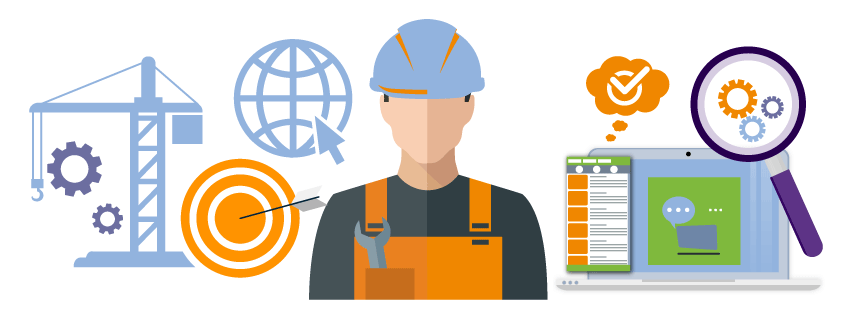
3 Benefits of Using CAT Tools When Translating
15 Jun 3 Benefits of Using CAT Tools When Translating
CAT tools stand for Computer Assisted Translation tools that are now known by translation firms and various organizations across the globe. Such tools are usually composed of translation memory software & terminology databases. However, this is not machine translation because it doesn’t actually translates, a translator works through the text and every unique sentence will be automatically saved into the translation memory along with its translation done by the linguist manually. At a later time, if the expression is found in another text, the tool will replace it with the translation, but the translator still has to go through the replacement and make sure it makes sense in the specific phrase.
3 benefits in using CAT tools for translation
Reliability
One of the most essential things to consider when you spend some time and money using translation services is that the content must be consistent, even if it is a web page, a manual or a flyer. The terms, name of the products and the abbreviations must be consistently used through the materials. The goodness about using CAT tools is that previously translated content can be reused, so the translators will be able to keep on top of the phrases that were translated in the past.
Added savings
Because the previous translations can be reused, you do not need to spend the same amount for translating some of your old content over and over again. For instance, there is a manufacturing firm that translates big technical manuals that must be released in various languages. 12 months after the first translation, there were modifications conducted to the original English file, some paragraphs were added, sentences eliminated and others. They give the new version of the manual to the translation company which analyses it against the translation memory, and they will charge much less for the content already translated in the past.
Quality assurance checks
A lot of CAT tools were made with built in quality assurance features like the auto correction, auto flagging, grammatical and formatting errors, missing translations and others. Such tools can help the translator through the task even if translation memory is not being used.

CAT Tools:
It is true that machines cannot take over every job. There will always be tasks that can only be handled effectively by humans. Especially the creative fields will always need the inspiring minds of humans. Translation is one such field where humans win the machine vs. human debate. But that doesn’t mean that machines can’t help humans complete their task with more efficiency and easy.

CAT Tools are an example of how assistance of a machine can save the time of people. Translators have to translate a different document every day, but more often than not they come across similar sentences and phrases that CAT tools help them recognize and remind them to use the translation they used the last time when translating a similar document. CAT tools are a blessing for all translators, not only for being so useful but also reliable. Using CAT tools while translating a document is like receiving guidance from a teacher during a test.
Advanced Strategies: CAT Tool Techniques for Quality Assurance
Quality assurance in translation is crucial and advanced CAT tools can helpzz achieve this. Features like partial matches and segmentation make complex projects manageable. CAT programs offer various software options for efficient translation processes. Human oversight is essential in ensuring translation consistency. By segmenting documents and using CAT software effectively, translators can maintain terminology consistency. Features like concordance searches aid in linguistic quality assurance. Collaborative and cloud-based tools streamline translation workflows. By utilizing advanced CAT tool techniques, translation providers can improve quality and cost-effectiveness. Meeting client demands in today’s global market is achievable with these tools
Maximizing Efficiency: CAT Tool Techniques for Translation Workflow
Professional translators use computer-assisted translation (CAT) tools for quality and productivity. CAT tools like Translation Memory (TM) and term bases store translations for efficiency. These tools suggest translations for recurring terms and help manage projects effectively. By using CAT tools, translators can ensure consistency and minimize errors in translations. Fuzzy matches in CAT tools identify similar segments for quick editing, improving productivity. CAT tools are essential for enhancing translation quality, reducing costs, and facilitating future projects in the evolving translation landscape.
Customization and Optimization: Tailoring CAT Tools to Your Needs
Customization and optimization are paramount when tailoring CAT tools to meet the specific needs of translators and language service providers. With the diverse range of documents and languages encountered in the translation industry, it’s essential to configure CAT tools to maximize efficiency and accuracy. By customizing core features such as terminology management and quality checks, translators can ensure consistent translations and reduce human errors.
Moreover, optimizing CAT tools for different file formats and content management systems enables seamless integration into existing workflows, saving time and improving productivity. Whether it’s adapting to multilingual documents or fine-tuning machine translation engines for higher accuracy, customization allows translators to achieve high-quality translations across a wide range of projects. Additionally, leveraging cloud-based CAT tools and artificial intelligence enhances collaboration and streamlines the translation process, paving the way for future projects and reducing translation costs. Ultimately, by customizing and optimizing CAT tools to their specific requirements, language service providers and freelance translators can deliver superior translations that meet the highest standards of quality and accuracy.
Overcoming Challenges: Troubleshooting Common Issues in CAT Tool Usage
Human translators play a critical role in ensuring the success of translation projects, particularly when dealing with technical documents and the accuracy of translations in the target language. While CAT tools offer numerous benefits such as increased productivity and access to translation memory databases, human translators provide invaluable expertise and linguistic fluency to the process. They meticulously analyze source documents, utilizing term bases and translation memory tools to maintain consistency and accuracy throughout the translation process.
Human translation not only guarantees the highest level of translation accuracy but also allows for nuanced interpretations and adaptations, especially when dealing with complex technical content. Moreover, individual translators and translation agencies rely on human intervention to deliver high-quality translations tailored to the specific requirements of each project and client. As the demand for quality translations continues to grow, human translators remain indispensable in providing reliable, accurate, and culturally appropriate translations for future projects across various industries and target languages.
Expanding Horizons: Exploring Innovative CAT Tool Techniques
Exploring innovative CAT tool techniques opens up new horizons for translators, especially when it comes to providing translation suggestions and optimizing the language combination process. CAT tools facilitate exact matches and efficiently segment documents, streamlining the localization process for various projects. With the ability to handle different file types in real time, translators save valuable time and enhance productivity. Moreover, innovative CAT tool techniques enable translators to navigate complex localization projects seamlessly, adapting software programs to meet specific requirements and optimizing file types for efficient processing. By exploring these advanced techniques, translators can expand their horizons and overcome language barriers, ultimately delivering high-quality translations within tight deadlines and across diverse linguistic landscapes.
Continuous Improvement: Strategies for Mastering CAT Tool Techniques
Continuous improvement is key to mastering CAT tool techniques, ensuring translators stay ahead in the ever-evolving translation landscape. By implementing strategies focused on ongoing learning and skill enhancement, translators can harness the full potential of CAT tools to optimize their workflow and deliver superior translations. This involves staying updated on the latest features and functionalities of CAT software, attending training sessions, and actively seeking feedback from peers and industry experts.
Additionally, translators can experiment with different techniques and approaches, refining their use of CAT tools to suit their specific needs and preferences. Regular practice and hands-on experience with various translation projects further contribute to proficiency in CAT tool techniques. By embracing a mindset of continuous improvement and actively refining their skills, translators can master CAT tool techniques and enhance their productivity, efficiency, and the overall quality of their translations.

